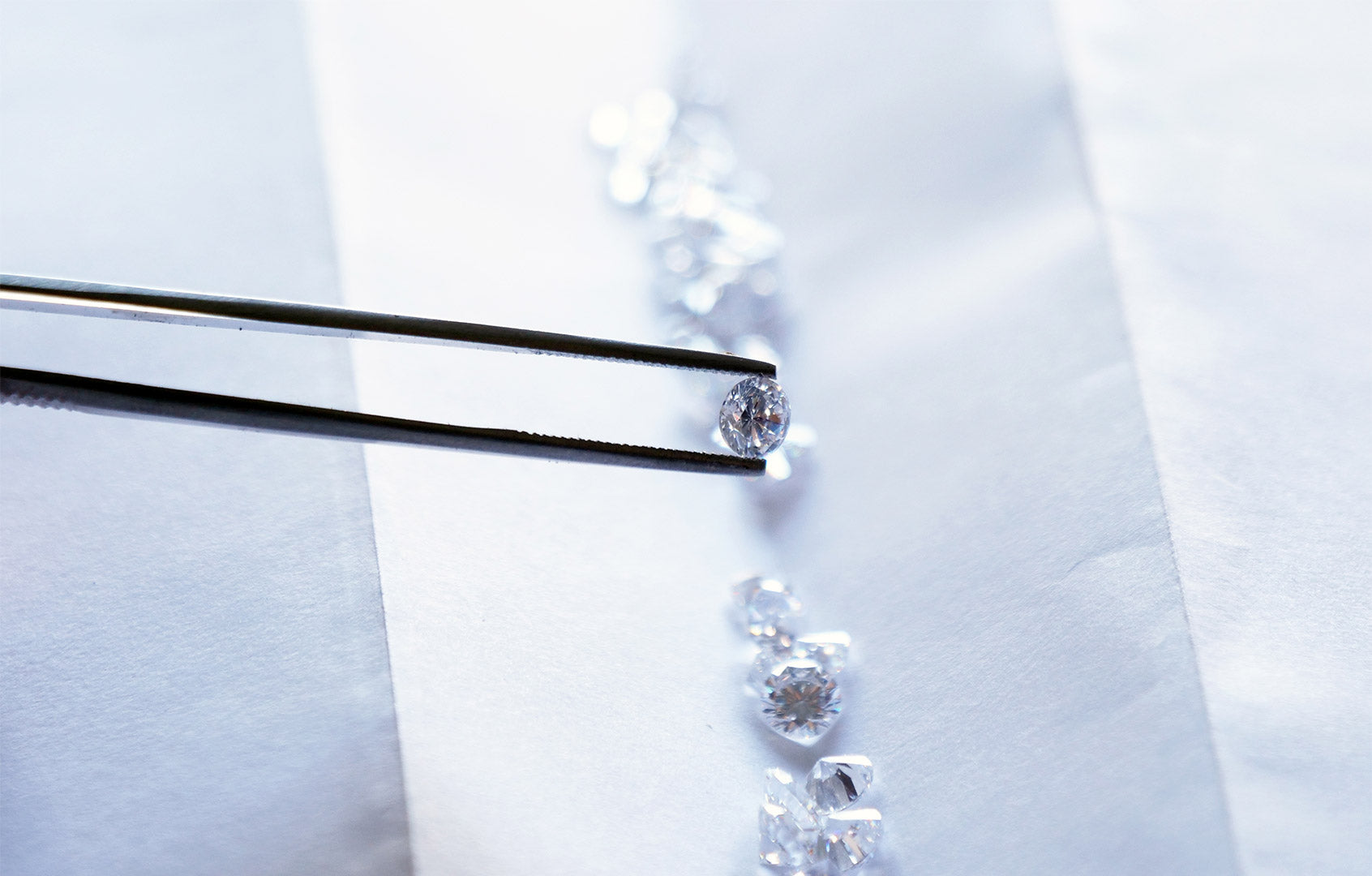It looks like a real diamond, it sparkles like a real diamond, but what is a man-made diamond? Find out all you need to know in this handy guide.
Before we delve into the characteristics of lab-grown diamonds, it is important to understand that there are two main ways to create a man-made diamond. There is high-pressure, high-temperature diamond (HPHT) growth which is designed to replicate the conditions of natural diamond growth. And there is chemical vapour deposition (CVD) which starts with a diamond seed and derives carbon from a vapour to grow into a diamond.
Check out the chart below to find out more about growth morphology or jump to a section by clicking the links in the overview section.

What Does Lab-Grown Diamond Mean?
Lab-grown diamonds also known as lab-created diamonds, synthetic diamonds and man-made diamonds are grown in laboratories to replicate natural diamonds which are formed in the earth's core. They do this by replicating the same chemical and optical properties as natural diamonds.
Man-made diamond prices are generally lower than natural diamonds, and the price of lab-grown diamonds continues to drop each year. This is due to lab-grown diamonds having very little resale value and the demand.
Natural diamonds are, of course, one of nature's greatest wonders. They can be billions of years old and are formed deep in the earth's crust under extreme pressure and high temperatures. They move closer to the earth's surface when volcanic activity occurs and become accessible to miners.
Like natural diamonds, lab-grown diamonds can be subjected to treatments to change their appearance. However, they are still subject to the Four Cs grading system. Typically, it takes a few weeks for a man-made diamond to be grown in a laboratory. This is much shorter than the millions or billions of years natural diamonds take to be produced.
Lab-created diamonds are capable of growing in all different sizes. From 10 carats all the way down to 0.10 carats, man-made diamonds are extremely versatile. When you are looking for lab-grown diamond jewellery, it pays to visit a reputable jeweller. Our collection of lab-grown diamond rings, lab-grown diamond earrings, lab-grown diamond pendants and lab-grown diamond necklaces are of the highest quality.
The History Of Lab-Grown Diamonds
Since the 1950s, lab-grown diamonds have been produced for industrial purposes. They were initially used in laser optics, healthcare, telecommunications and more. Tiny synthetic diamonds were used in saw blades for cutting asphalt and marble, in drill bits for oil and gas drilling.
The first known man-made diamond was produced by researchers at the Allmanna Svenska Elektriska Aktiebolaget Laboratory in Stockholm, Sweden. It wasn't until the 1980s before they were grown for jewellery purposes. Initially, they were small and yellow and not of the highest quality.
Over time, the quality improved and they have become one of the most popular pieces of diamond jewellery on the market. Today, more than 100 tons of the laboratory-grown diamond is produced annually worldwide by firms.
For over 30 years, gemologists have studied man-made diamonds to distinguish how they can be told apart from natural diamonds. Today, there are various educational programs that train gemologists to identify what is a man-made diamond.

What A Man-Made Diamond Is Not
Now you know what is a man-made diamond, it's time to find out what one is not. Lab-grown diamonds are not natural diamonds and they are certainly not cubic zirconia. While lab-made diamonds are made of carbon, CZ is made of zirconium dioxide.
The first thing you should look for in a lab-created diamond is if there was accurate disclosure on how the diamond was sourced and created. If you can not find out what type of diamond it actually is, it's best to steer clear from it.
Nobody really knows if these diamonds will become a popular choice in the long term but what's for certain is it's really down to personal choice and emerging trends. As Toby Bensimon explained on the Jewellers Podcast, social media is certainly having an influence.
''I think now, the homogeneity of jewellery globally is driven by Instagram,'' he said.
''I mean, before anyone comes into our store, they've looked at 10,000 pictures of a ring. Whereas before that, they would get two catalogues, have a look and circle the ones they liked.
''Now they just have this extreme exposure and the influential people on those platforms really dictate and drive the tastes of the day. If they see Kim Kardashian with an oval-shaped diamond, you better believe it, the next day, that's what everyone's asking for.''
When it comes to selecting an engagement ring, lab-created diamonds are a great choice. They come in a variety of shapes and colours to match everyone's style. The fact is, lab diamonds are being chosen much more frequently while mined diamonds are becoming less and less popular. Check out our lab-created yellow diamond rings, white gold lab-created diamond rings and rose gold lab-created diamond rings to see the versatility of these magnificent stones.
Are They Conflict-Free?
You've probably heard the term blood diamond' or seen the Hollywood film starring Leonardo di Caprio. It refers to diamonds that are mined in war zones and create conflict. One of the many benefits of lab-grown diamonds is the fact that they are conflict-free. Many retailers now market their diamonds as conflict-free' to entice conscientious buyers.
Over time, natural diamond mining can also result in land degradation and soil erosion that can be detrimental to the local environment. While the factories that lab-grown diamonds are created in produce emissions, the risk to the environment from natural diamond mining is far greater.
Ultimately, it comes down to the individual and what about the diamond is important to them: where it comes from, or what it looks like. If you need help with the purchase of your new jewellery, feel free to visit us in-store. We hope you now know what is a man-made diamond.







